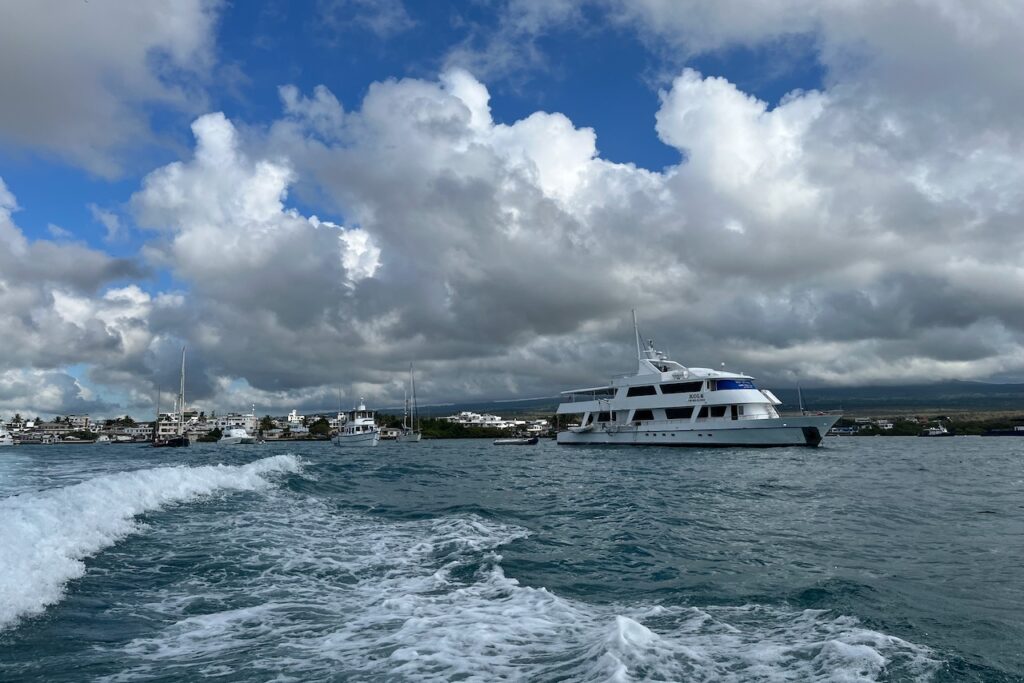Our trip to Galapagos started with arrival to Seymour Galapagos Ecological Airport on Baltra island and transfer to Santa Cruz island. There is no international airport in Galapagos and all the arrivals come from mainland Ecuador. We arrived via Guayaquil.
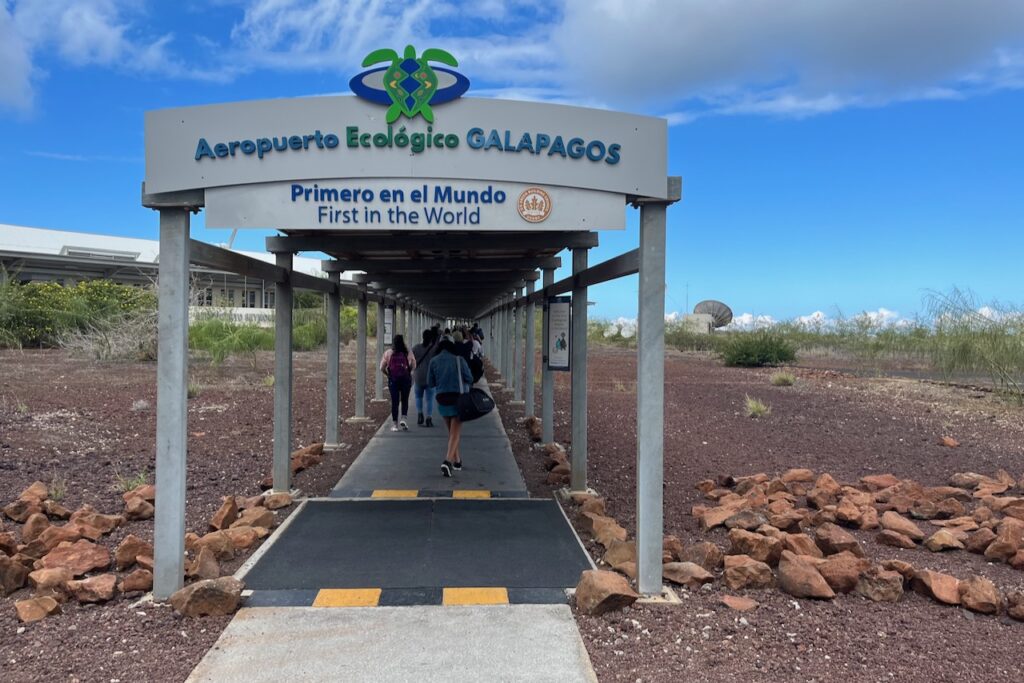
Getting from the airport to Puerto Ayora – the main town on Santa Cruz island where we stayed -.requires taking a bus then a water taxi and then a regular taxi. The bus from the airport to water taxi was comfortable, service prompt, took about 10 minutes and cost US$5.
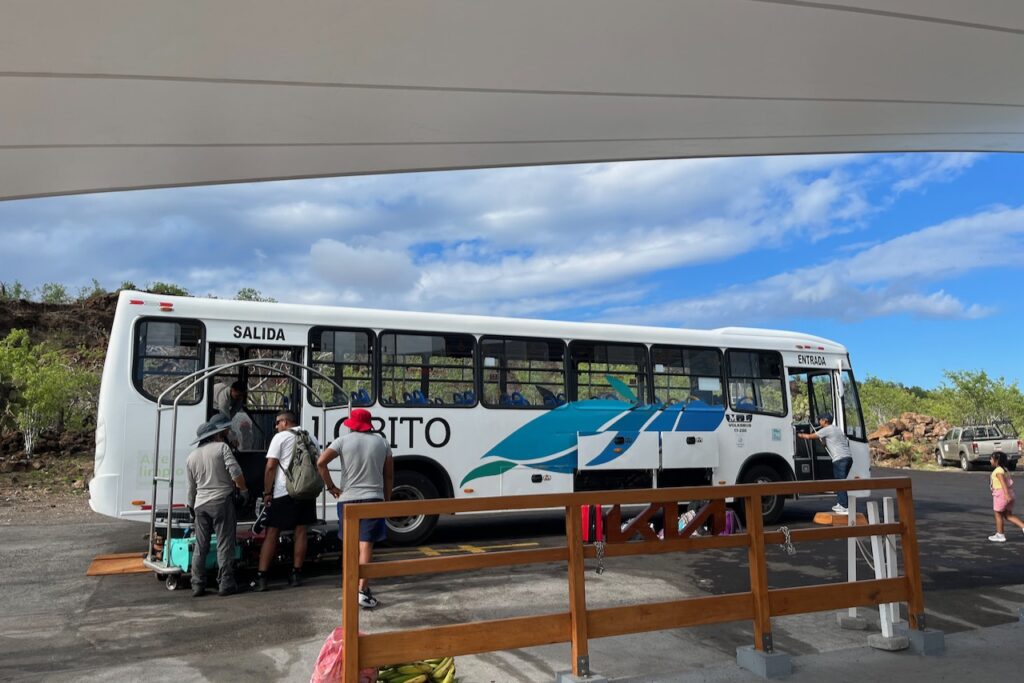
Then on to the little water taxi. Here also service was prompt, bags were loaded and unloaded by bus and water taxi operators. It took about 5 minutes to cross the channel to Santa Cruz island.
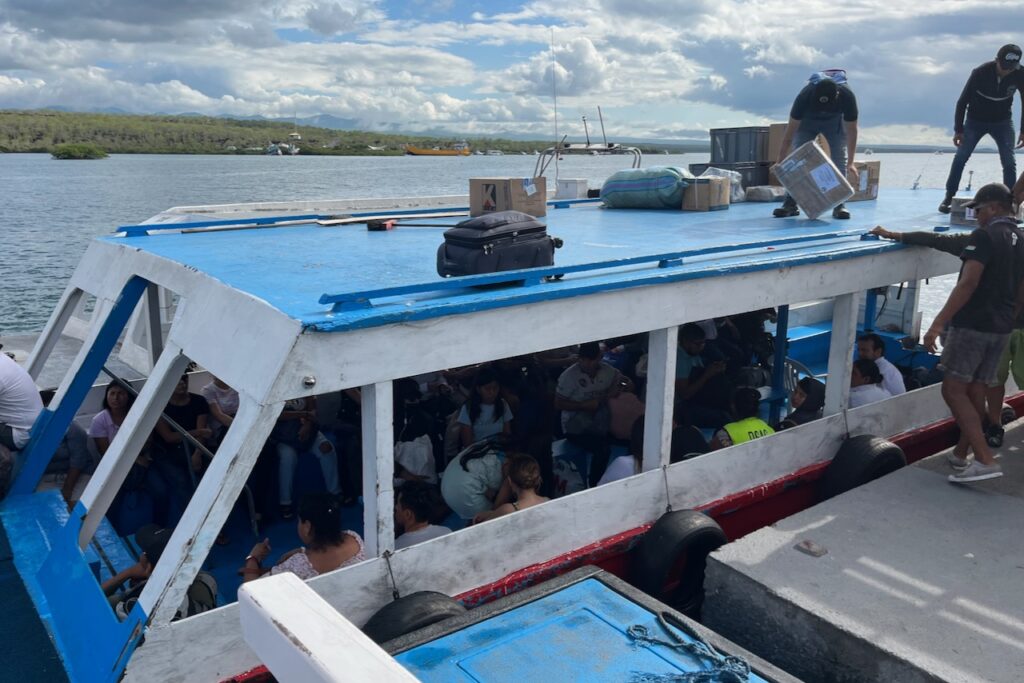
Once on Santa Cruz side, there were many taxi operators waiting to take tourists to their hotels. All taxis are 4×4 pick up trucks taking 4 passengers. It took about 30 minutes to get to Puerto Ayora. On the way it is possible to visit the tortoises ranch and sink holes. We arrived in the afternoon and decided to go directly to town. But if one arrives earlier in the day it is probably not a bad idea to do sinkholes and tortoises on the way from the airport as they are about half way between the airport and Puerto Ayora.
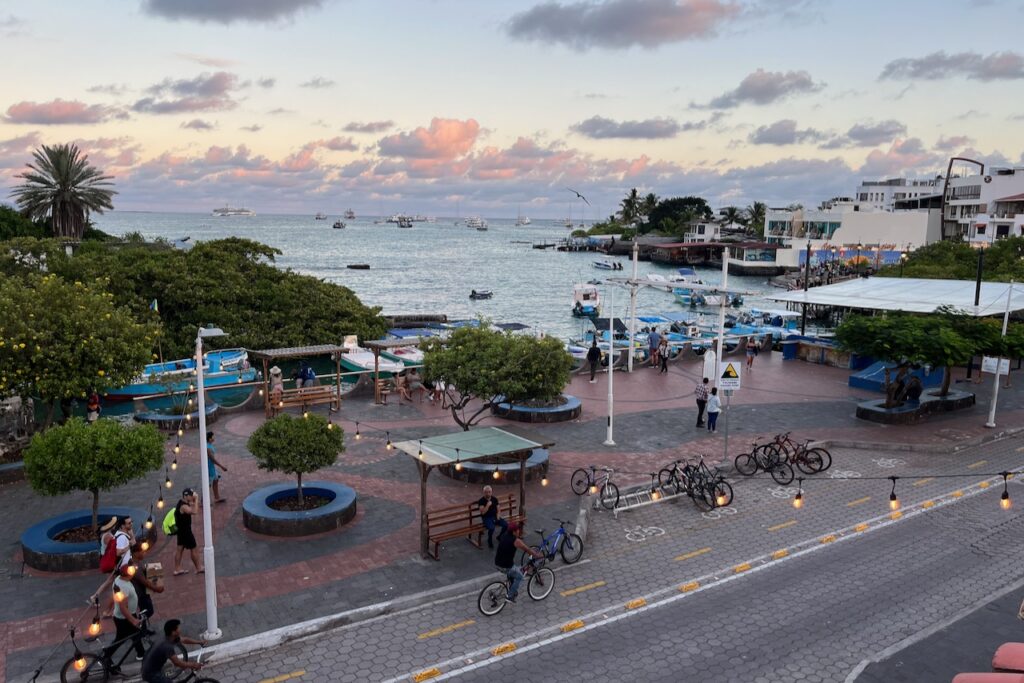
Puerto Ayora is the biggest town in Galapagos with about 12,000 people. It is a nice little lively town. The main street is going along the waterfront and has all the restaurants, souvenir shops and tour operators.

The next day we headed to Tortuga bay. The walk to the bay is about 40 minutes through a forested area on a nicely paved walkway. We found it was best to go early in the morning leaving hotel around 7am. It is not as hot for the walk and then when we would make it to the beach it would be completely empty. From 9am and on more people arrive all through the day.
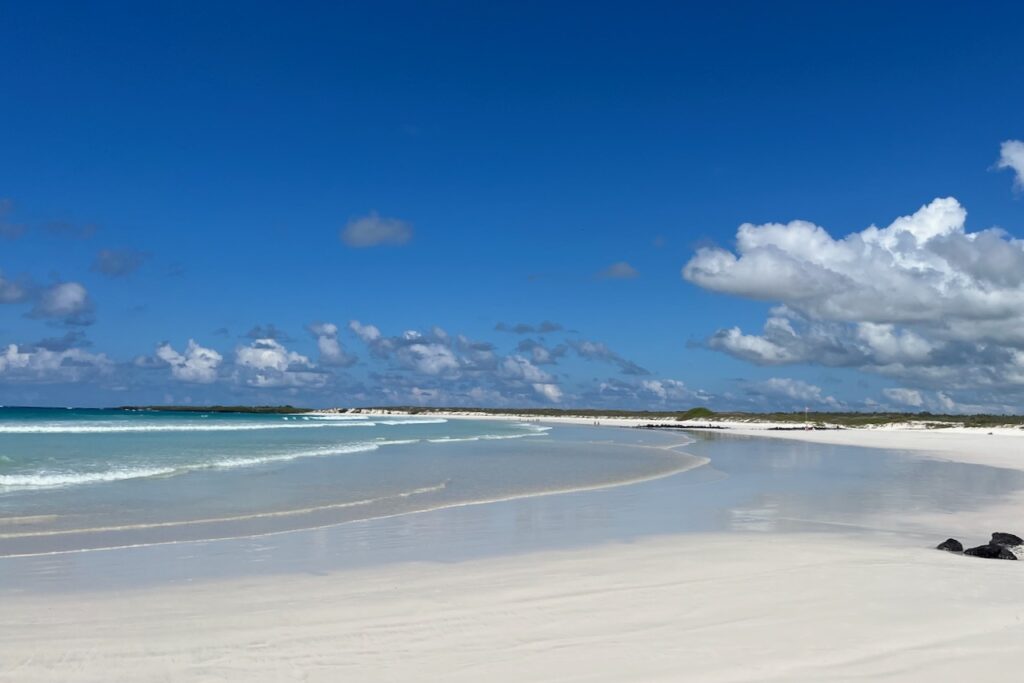
The first beach, called Playa Brava – meaning rough beach – is a long wide perfect wight sand beach. The sea is rough, as the name suggests, and swimming is not recommended because of currents. It is stunningly beautiful and perfect for a morning walk. There are quite a few sea birds on the beach and marine iguanas. We also saw a fin of a large (about 3m) shark coming close to shore.

At the edges of the beach there are mangroves and marine iguanas come and rest there between taking swims to feed. Marine iguanas are endemic to Galapagos and are the only sea going lizard in the world. Iguana coloration differs between islands and the ones in Santa Cruz were greenish black, those we saw on Floreana were reddish.

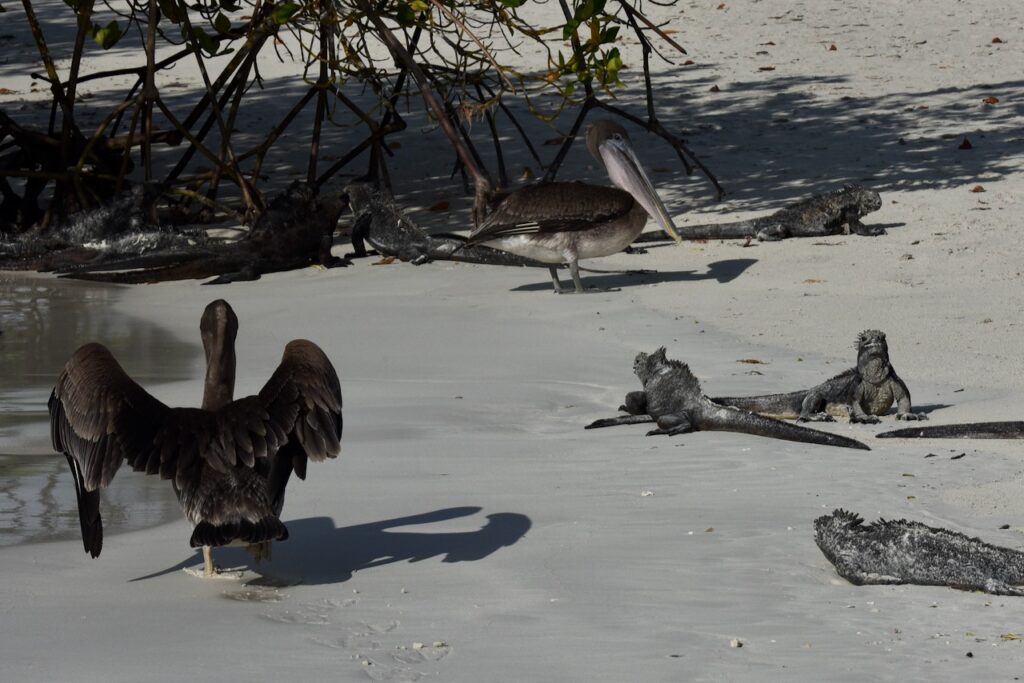
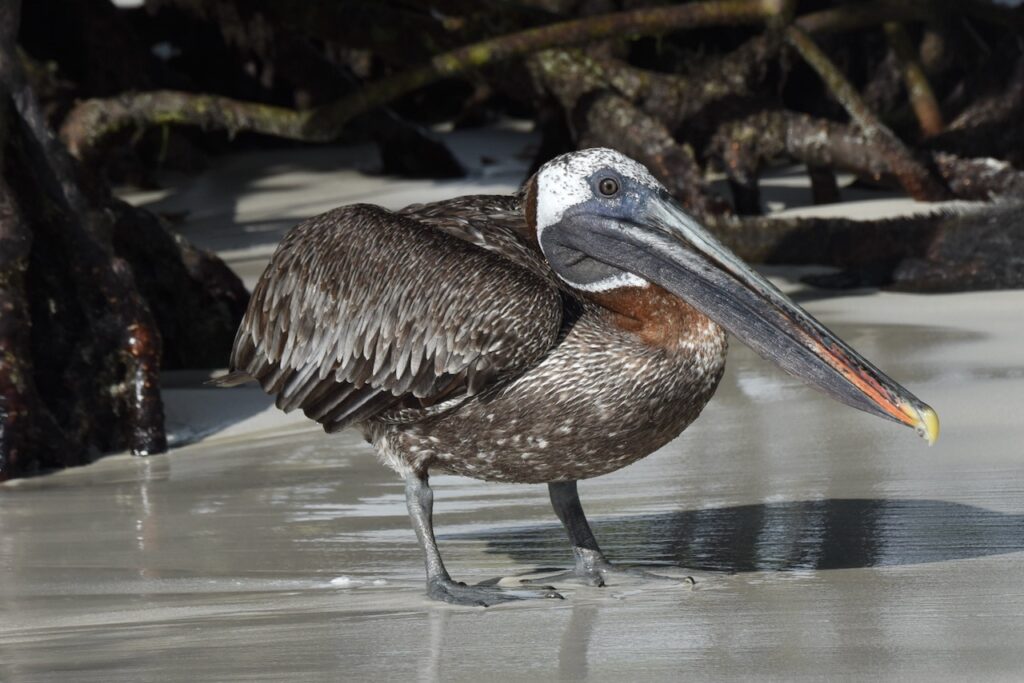
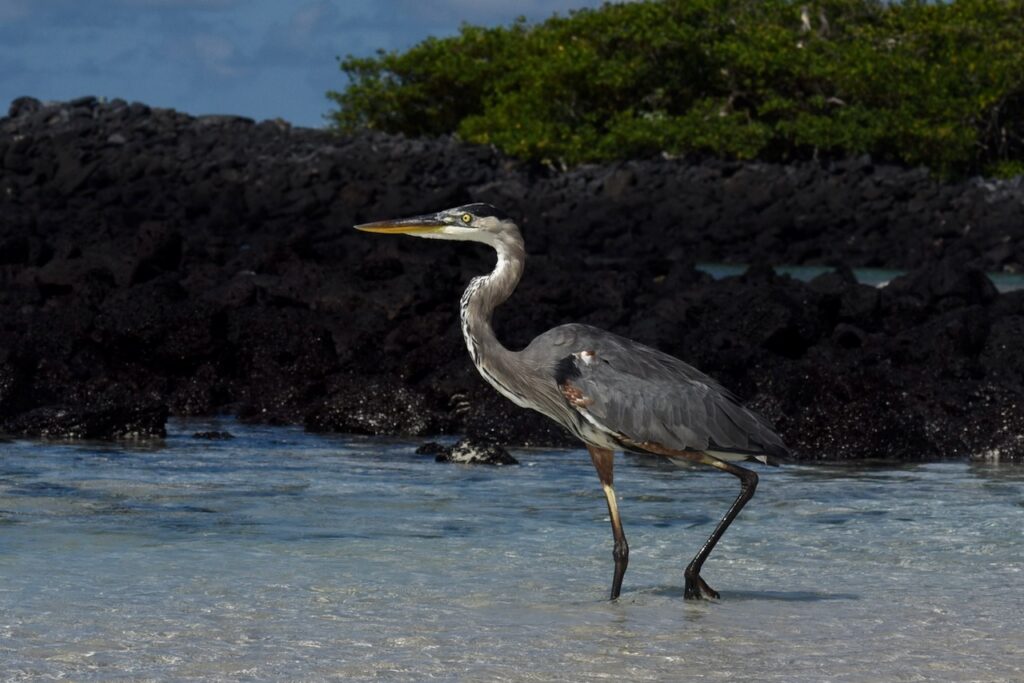
Going further through a patch of mangroves there is Playa Mansa – gentle beach. It’s a smaller beach with white sand on a deep bay fringed by mangroves. Arriving around 8am we would have it almost to ourselves but it fills up with people later in the day. It seems to be a popular place for locals as well, as this is the closest beach to the town with nice flat water.
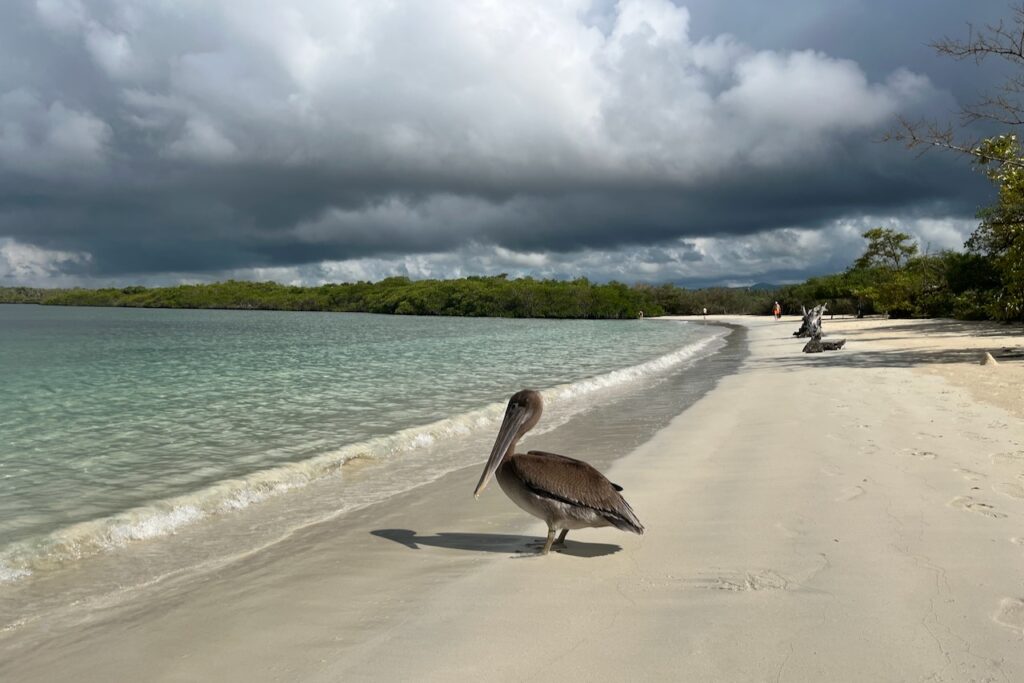
The bay with its mangroves is a fish nursery. We saw several juvenile little sharks – a few blacktips and even one hammerhead that were swimming very close to shore. We also went for a snorkel around mangroves and saw more juvenile sharks, reef fish, stingray and turtles.
The place to go and see giant tortoises on Santa Cruz is El Chato tortoise reserve. El Chato is a 12 hectares ranch. Tortoises roam freely munching on the grass. We even saw mating tortoises!


Also at El Chato one can visit lava tunnels. The tunnels are lit and have natural light coming in, it’s never completely dark. The ranch can be muddy and with all the rocks in the tunnels it is best to have proper shoes for the visit to El Chato. We took a regular taxi to El Chato and once there, purchased the tour. Overall visit was not much more than an hour and about 30 minutes to get there and back.
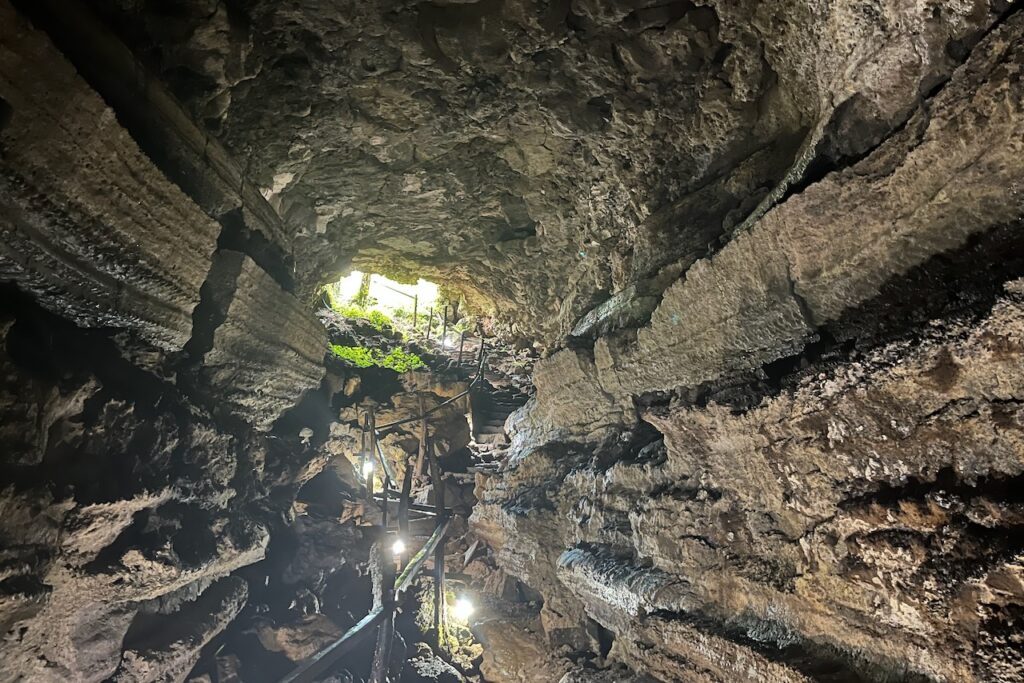
Back in Puerto Ayora, town’s main pier is a nice spot at sunset. One can watch all the fish life in the bay – we saw quite a few juvenile blacktip sharks, school of golden cownose rays, turtles. Sea lions settle for the night on and near the benches at the pier.
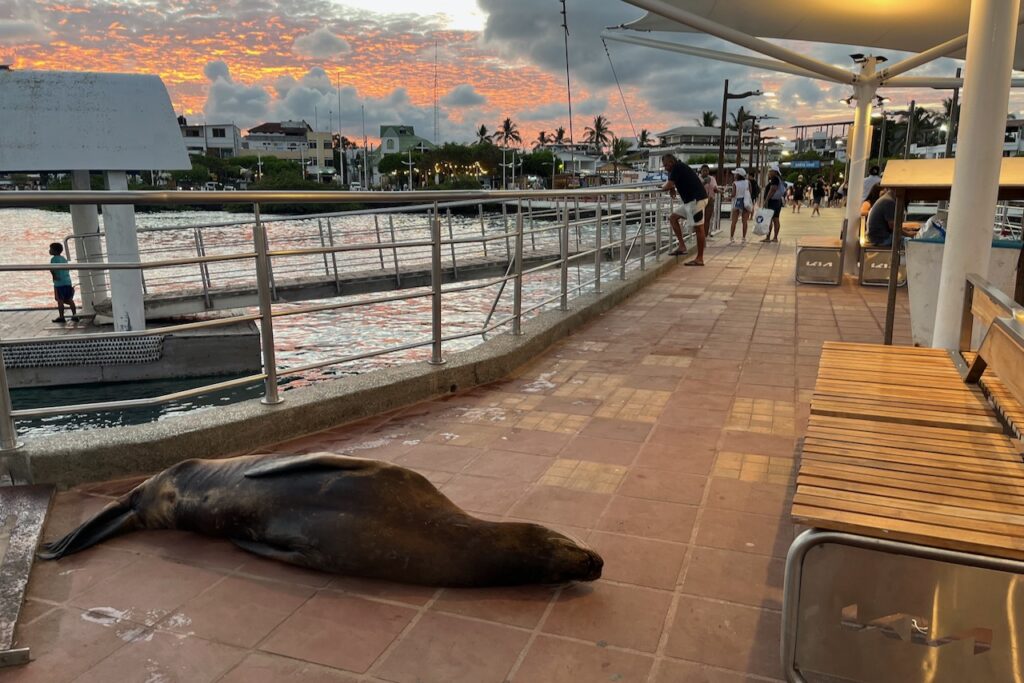
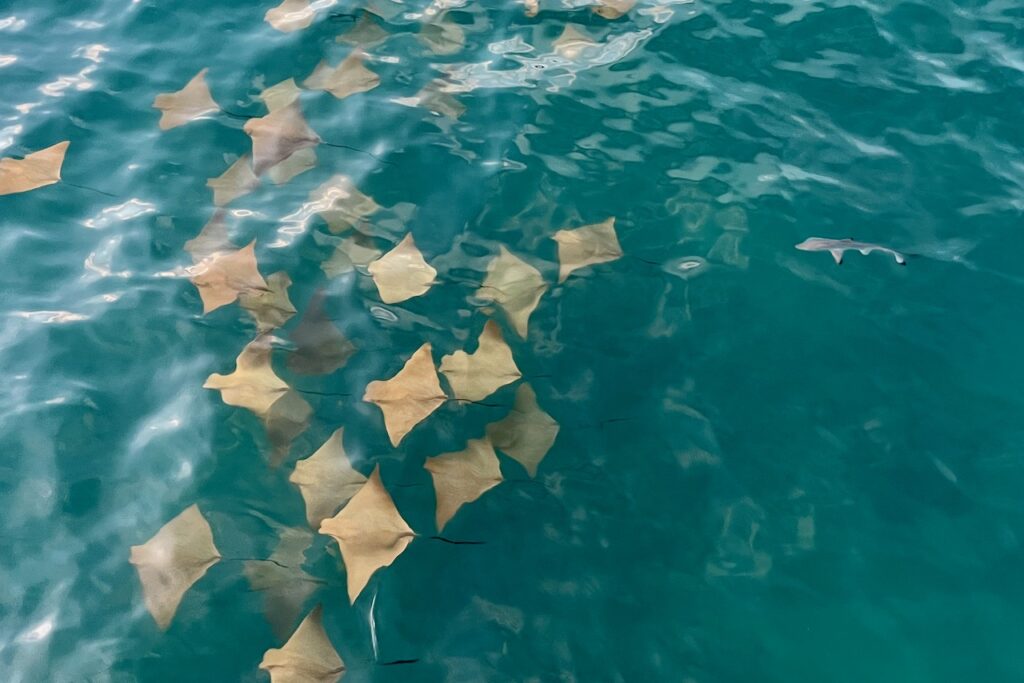
After three days in Santa Cruz including one with a day trip to Floreana island, we headed over to San Christobal to catch our liveaboard.
